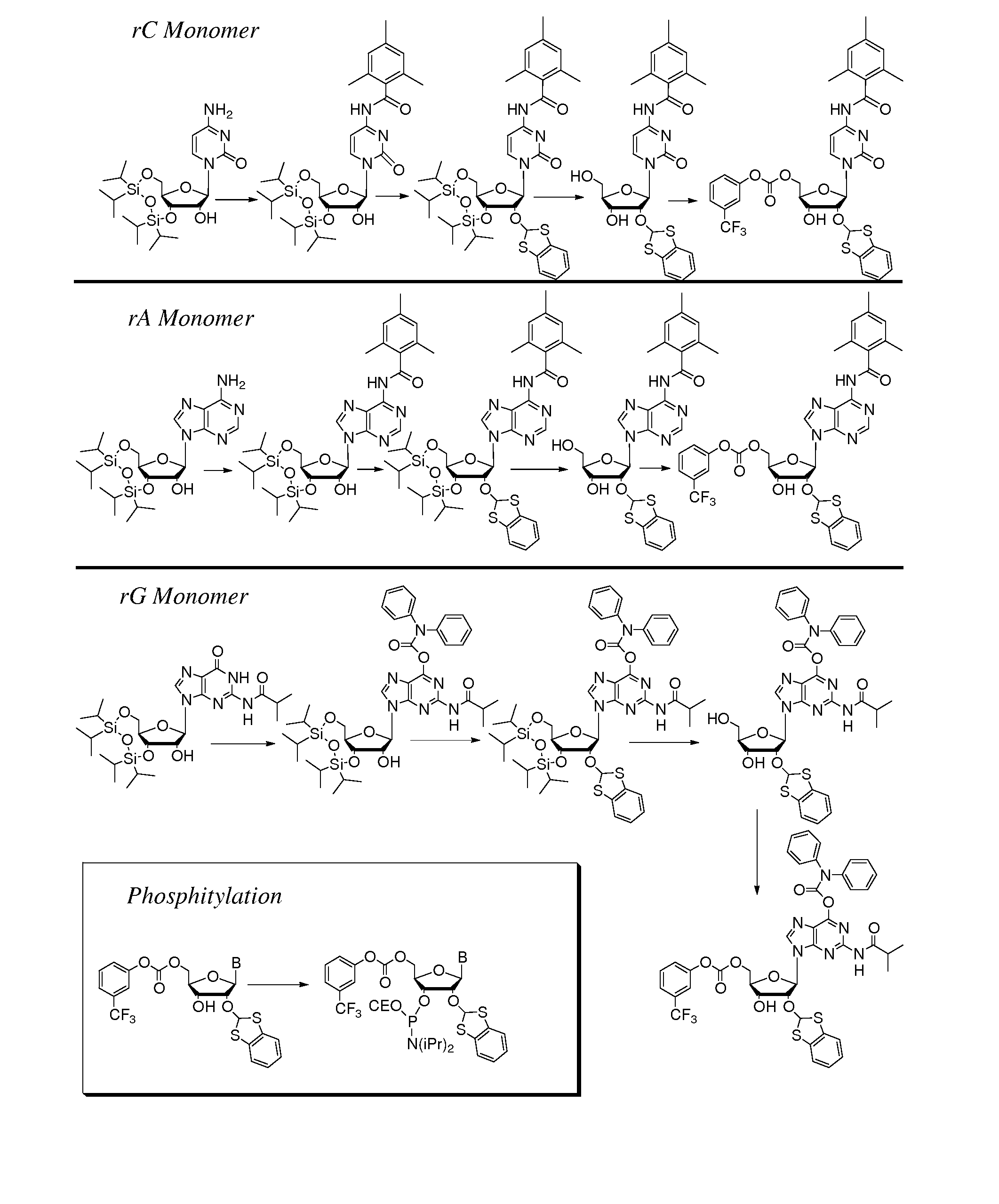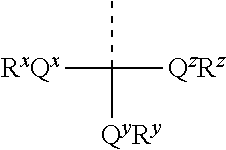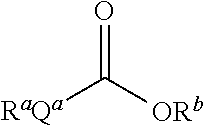Protecting groups for RNA synthesis
a technology of protecting groups and rna, which is applied in the direction of biocide, organic chemistry, etc., can solve the problems of insufficient oligobonucleotide syntheses carried out using tbdms, less stable internucleotide bonds in rna than in dna, and difficult chemical synthesis of rna
- Summary
- Abstract
- Description
- Claims
- Application Information
AI Technical Summary
Benefits of technology
Problems solved by technology
Method used
Image
Examples
Embodiment Construction
[0051]Aspects of the invention include 2′ protected nucleoside monomers that are protected at the 2′ site with orthoester-type protecting groups. The 2′ protected monomers also include a second, aryl carbonate-type, protecting group. Embodiments of the orthoester-type protecting groups include orthoester protecting groups as well as orthothioester protecting groups. Embodiments of the acyl carbonate-type protecting groups include acyl carbonate protecting groups as well as acyl thiocarbonate protecting groups. Aspects of the invention further include nucleic acids that include the protecting groups of the invention, as well as methods of synthesizing nucleic acids using the protecting groups of the invention.
[0052]Before the present invention is described in greater detail, it is to be understood that this invention is not limited to particular embodiments described, as such may, of course, vary. It is also to be understood that the terminology used herein is for the purpose of desc...
PUM
| Property | Measurement | Unit |
|---|---|---|
| pH | aaaaa | aaaaa |
| pH | aaaaa | aaaaa |
| structure | aaaaa | aaaaa |
Abstract
Description
Claims
Application Information
 Login to View More
Login to View More - R&D
- Intellectual Property
- Life Sciences
- Materials
- Tech Scout
- Unparalleled Data Quality
- Higher Quality Content
- 60% Fewer Hallucinations
Browse by: Latest US Patents, China's latest patents, Technical Efficacy Thesaurus, Application Domain, Technology Topic, Popular Technical Reports.
© 2025 PatSnap. All rights reserved.Legal|Privacy policy|Modern Slavery Act Transparency Statement|Sitemap|About US| Contact US: help@patsnap.com



